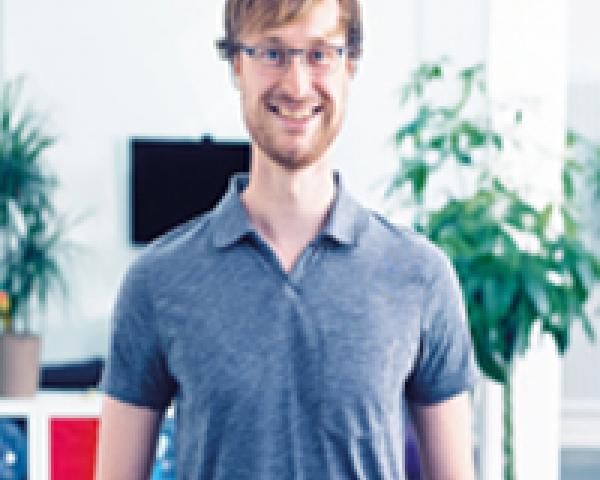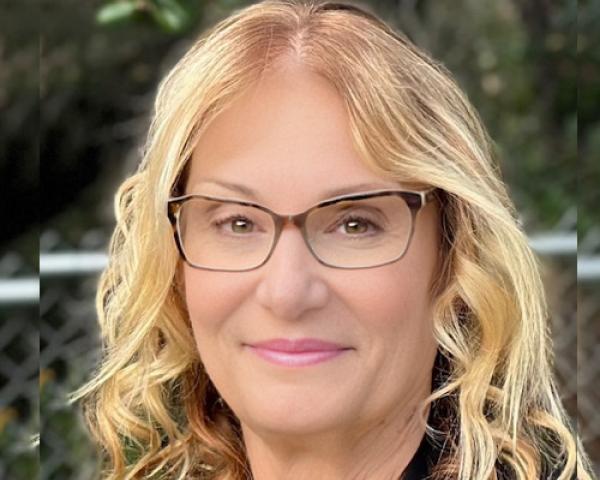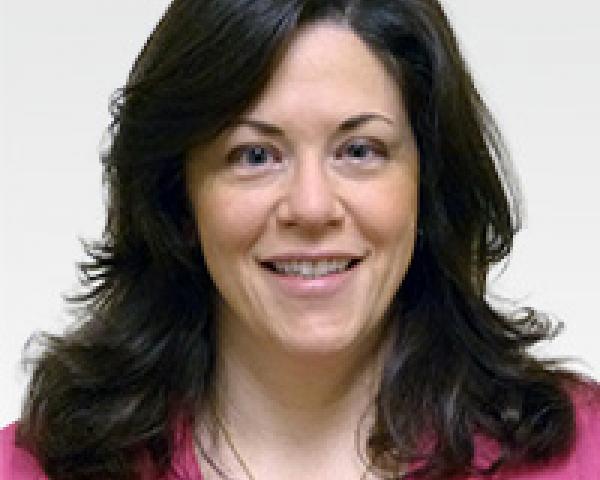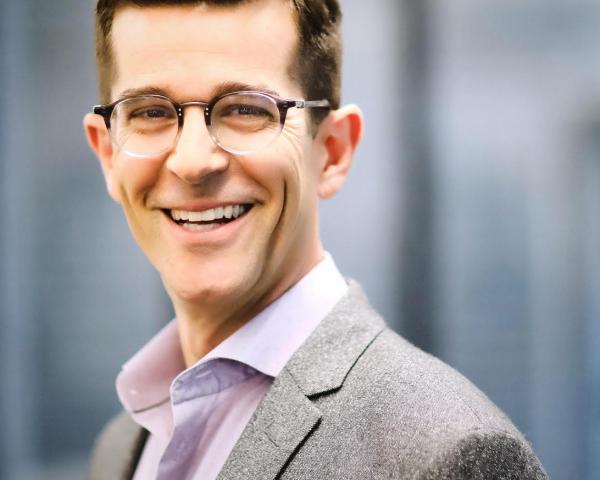InsurTech Forces Industry to Rethink
As consumers use more and more online sources or digital agents to manage their policies, local agents will become less important.

As consumers use more and more online sources or digital agents to manage their policies, local agents will become less important.

Get Involved
Our authors are what set Insurance Thought Leadership apart.
|
Partner with us
We’d love to talk to you about how we can improve your marketing ROI.
|

Dennis Just is the founder and CEO of Knip. At age 16, he founded his first company in the e-sports business, turned it into the largest German portal in that field and sold it three years later, shortly after graduating from school.
Is Tesla racing toward victory or calamity with its Autopilot? The answer hinges on a key issue in human/robot interaction.

 Don Norman, Director, Design Lab, University of California San Diego (Source: JND.org)
Don Norman, the director of the Design Lab at University of California, San Diego, argues that the most dangerous model of driving automation is the “mostly-but-not-quite-fully-automated” kind. Why?
"Because the more reliable the automation, the less likely the driver will be to respond in time for corrective action. Studies of airline pilots who routinely fly completely automated airplanes show this (as do numerous studies over the past six decades by experimental psychologists). When there is little to do, attention wanders." [Source: San Diego Union-Tribune]
Norman contends that car autopilots are more dangerous than airplane autopilots. Airplanes are high in the sky and widely distributed. Pilots are well-trained and have several minutes to respond. Drivers are not nearly as well-trained and may have only seconds to respond.
Yet, Tesla’s “Autopilot” follows exactly the “mostly-but-not-quite-fully-automated” model about which Norman warns.
I asked Norman about Tesla’s approach. His response:
"Tesla is being reckless. From what I can tell, Tesla has no understanding of how real drivers operate, and they do not understand the need for careful testing. So they release, and then they have to pull back."
As examples, Norman pointed to Tesla’s highway passing, automatic parking and summon features.
Norman considers Tesla’s highway passing feature dangerous because its cars do not have sufficient backward-looking sensors. Mercedes and Nissan, he noted, have far better back-looking sensors.
Consumer Reports found serious issues with Tesla’s automatic parking and summon features. Tesla’s sensors had high and low blind spots, causing the car to fail to stop before hitting objects like duffel bags and bicycles. There were also issues with the user interface design. The parking control buttons on the car key fob were not marked. The car continued to move when the iPhone app was closed. Consumer Reports told its readers, “It is critical to be vigilant when using this feature, especially if you have children or pets.” Tesla fixed these problems once Consumer Reports raised its safety concerns.
Here’s Don Norman’s observation about Tesla’s quick response:
"Good for Tesla, but it shows how uninformed they are about real-world situations."
"Tesla thinks that a 1 in a million chance of a problem is good enough. No. Not when there are 190 million drivers who drive 2.5 trillion miles."
If Norman is right, Tesla owners will grow less attentive—rather than more vigilant—as Tesla’s autopilot software gets better. Situations where their intervention is needed will become rarer but also more time-sensitive and dangerous.
Indeed, customer experience with Tesla’s early autopilot software produced a number of reports and videos of silly antics and near-calamitous cases. Here are just a few:
Jump to time mark 2:45 for the near accident:
Be sure to read the background comments from Joey Jay, the uploader of the video:
Jump to time mark 4:00 for a particularly “fun and scary” segment:
If Norman is wrong, Tesla does have a huge advantage, as Tilleman and McCormick note.
Other companies pursuing a semi-autonomous approach, like GM and Audi, have been slower to deploy new models with comparable capabilities.
Google, which advocates a fully driverless approach for the reasons that Norman cites, is mired in a state and national struggle to remove the regulatory limits to its approach. Even if Google gets the green light, its pace is constrained by its relatively small fleet of prototypes and test vehicles.
Tesla, on the other hand, has a powerful software platform that allows it to roll out semi-autonomous capability now, as it deems appropriate. And, it is doing so aggressively. Autopilot is already on more than 35,000 Tesla models on the road—and Tesla just announced a promotion offering one-month free trials to all Model S and X owners.
Soon, it will be preinstalled on all of the more affordable Model 3, of which more than 300,000 have been preordered.
That’s a critical advantage. The quality of autonomous driving software depends in large part on the test cases that feed each developer’s deep learning AI engines. More miles enable more learning, and could help Tesla’s software outdistance its competitors.
The challenge, however, is that Tesla is relying on its customers to discover the problems. As noted in Fortune, Elon Musk has described Tesla drivers as essentially “expert trainers for how the autopilot should work.”
Tom Mutchler wrote in Consumer Reports that “Autopilot is one of the reasons we paid $127,820 for this Tesla.” But, he also noted, “One of the most surprising things about Autopilot is that Tesla owners are willingly taking part in the research and development of a highly advanced system that takes over steering, the most essential function of the car.”
Telsa’s early-adopter customers are willing, even enthusiastic, about Autopilot. But, should untrained, non-professional drivers be relied upon to be ready when Tesla’s autopilot needs to return control to the human driver? Can they anticipate problems and intervene to retake control without being asked? Will they follow safety guidelines and use the autopilot only under recommended conditions, or will they push the limits as their confidence grows?
Imagine the consequences if a new slew of Tesla owner videos ended with a catastrophic failure rather than a nervous chuckle? It would be tragic for the victims and Tesla. It might also dampen the enthusiasm for driverless cars in general and derail the many benefits that the technology could deliver.
While the mantra in Silicon Valley is “move fast and break things,” Elon Musk needs to reconsider how much that principle should apply to Tesla’s cars and customers.
Don Norman, Director, Design Lab, University of California San Diego (Source: JND.org)
Don Norman, the director of the Design Lab at University of California, San Diego, argues that the most dangerous model of driving automation is the “mostly-but-not-quite-fully-automated” kind. Why?
"Because the more reliable the automation, the less likely the driver will be to respond in time for corrective action. Studies of airline pilots who routinely fly completely automated airplanes show this (as do numerous studies over the past six decades by experimental psychologists). When there is little to do, attention wanders." [Source: San Diego Union-Tribune]
Norman contends that car autopilots are more dangerous than airplane autopilots. Airplanes are high in the sky and widely distributed. Pilots are well-trained and have several minutes to respond. Drivers are not nearly as well-trained and may have only seconds to respond.
Yet, Tesla’s “Autopilot” follows exactly the “mostly-but-not-quite-fully-automated” model about which Norman warns.
I asked Norman about Tesla’s approach. His response:
"Tesla is being reckless. From what I can tell, Tesla has no understanding of how real drivers operate, and they do not understand the need for careful testing. So they release, and then they have to pull back."
As examples, Norman pointed to Tesla’s highway passing, automatic parking and summon features.
Norman considers Tesla’s highway passing feature dangerous because its cars do not have sufficient backward-looking sensors. Mercedes and Nissan, he noted, have far better back-looking sensors.
Consumer Reports found serious issues with Tesla’s automatic parking and summon features. Tesla’s sensors had high and low blind spots, causing the car to fail to stop before hitting objects like duffel bags and bicycles. There were also issues with the user interface design. The parking control buttons on the car key fob were not marked. The car continued to move when the iPhone app was closed. Consumer Reports told its readers, “It is critical to be vigilant when using this feature, especially if you have children or pets.” Tesla fixed these problems once Consumer Reports raised its safety concerns.
Here’s Don Norman’s observation about Tesla’s quick response:
"Good for Tesla, but it shows how uninformed they are about real-world situations."
"Tesla thinks that a 1 in a million chance of a problem is good enough. No. Not when there are 190 million drivers who drive 2.5 trillion miles."
If Norman is right, Tesla owners will grow less attentive—rather than more vigilant—as Tesla’s autopilot software gets better. Situations where their intervention is needed will become rarer but also more time-sensitive and dangerous.
Indeed, customer experience with Tesla’s early autopilot software produced a number of reports and videos of silly antics and near-calamitous cases. Here are just a few:
Jump to time mark 2:45 for the near accident:
Be sure to read the background comments from Joey Jay, the uploader of the video:
Jump to time mark 4:00 for a particularly “fun and scary” segment:
If Norman is wrong, Tesla does have a huge advantage, as Tilleman and McCormick note.
Other companies pursuing a semi-autonomous approach, like GM and Audi, have been slower to deploy new models with comparable capabilities.
Google, which advocates a fully driverless approach for the reasons that Norman cites, is mired in a state and national struggle to remove the regulatory limits to its approach. Even if Google gets the green light, its pace is constrained by its relatively small fleet of prototypes and test vehicles.
Tesla, on the other hand, has a powerful software platform that allows it to roll out semi-autonomous capability now, as it deems appropriate. And, it is doing so aggressively. Autopilot is already on more than 35,000 Tesla models on the road—and Tesla just announced a promotion offering one-month free trials to all Model S and X owners.
Soon, it will be preinstalled on all of the more affordable Model 3, of which more than 300,000 have been preordered.
That’s a critical advantage. The quality of autonomous driving software depends in large part on the test cases that feed each developer’s deep learning AI engines. More miles enable more learning, and could help Tesla’s software outdistance its competitors.
The challenge, however, is that Tesla is relying on its customers to discover the problems. As noted in Fortune, Elon Musk has described Tesla drivers as essentially “expert trainers for how the autopilot should work.”
Tom Mutchler wrote in Consumer Reports that “Autopilot is one of the reasons we paid $127,820 for this Tesla.” But, he also noted, “One of the most surprising things about Autopilot is that Tesla owners are willingly taking part in the research and development of a highly advanced system that takes over steering, the most essential function of the car.”
Telsa’s early-adopter customers are willing, even enthusiastic, about Autopilot. But, should untrained, non-professional drivers be relied upon to be ready when Tesla’s autopilot needs to return control to the human driver? Can they anticipate problems and intervene to retake control without being asked? Will they follow safety guidelines and use the autopilot only under recommended conditions, or will they push the limits as their confidence grows?
Imagine the consequences if a new slew of Tesla owner videos ended with a catastrophic failure rather than a nervous chuckle? It would be tragic for the victims and Tesla. It might also dampen the enthusiasm for driverless cars in general and derail the many benefits that the technology could deliver.
While the mantra in Silicon Valley is “move fast and break things,” Elon Musk needs to reconsider how much that principle should apply to Tesla’s cars and customers.
Get Involved
Our authors are what set Insurance Thought Leadership apart.
|
Partner with us
We’d love to talk to you about how we can improve your marketing ROI.
|

Chunka Mui is the co-author of the best-selling Unleashing the Killer App: Digital Strategies for Market Dominance, which in 2005 the Wall Street Journal named one of the five best books on business and the Internet. He also cowrote Billion Dollar Lessons: What You Can Learn from the Most Inexcusable Business Failures of the Last 25 Years and A Brief History of a Perfect Future: Inventing the World We Can Proudly Leave Our Kids by 2050.
A new approach -- the Humalogy Scale -- lets you improve customer service while creating a lean organization that lowers costs.

Humans have amazing capabilities and, even more, they can be amplified by the power of technology. When both are working in harmony, what was once impossible becomes possible. Technology is now the “X” factor that can help you become more efficient while more effectively serving your base. When it is intentionally aligned with human effort, technology acts a weapon you can wield to strengthen your organization, increase the ability of your team and delight your customers or members. Discovering this human/technology balance is a process we often walk our clients through; many of these clients are in the financial services space, which is an industry being transformed by technology as much as any. There will be winners and losers in the financial space and the defining variable will be how well you can learn to integrate humans and technology to deliver your business model. We call this integration Humalogy. What is Humalogy? Humalogy is the integration of technology and human effort to improve processes and offer a positive and meaningful impact on an organization. That’s only when Humalogy is properly balanced. Understanding the Humalogy balance is critical because if left unbalanced it can be expensive to an organization, highly infuriating to customers or both. The balance you find will enable you to do some magical things. Here are just a few examples: See Also: Tips on Improving Customer Experience
The Humalogy Scale We have developed the Humalogy scale to measure the balance of human and technology effort. We use this scale with our clients, many in the risk insurance space. Some processes lean heavily on humans (H5 on the Humalogy scale), and others primarily rely on technology (T5). Zero is an equal balance of effort from both humans and technology. What is important to recognize is that there is no “universally correct” balance. The proper balance for any space is the balance that yields you the highest level of efficiency combined with the best possible customer or member experience.  For example, H5 would be an insurance agent traveling to an accident and manually filling out a claim. Moving across the scale, we find a claimant snapping a picture of the accident using a smartphone and then filing a claim using a mobile app and receiving payment through direct deposit. This requires much less human effort and so is high on the T-side of the scale. By defining where these processes are on the Humalogy Scale, it becomes easier to determine where to apply technology to drive efficiency, scalability or repetition. At the same time, in our technology-augmented world, we need to be conscious that some processes can be improved by adding the human elements that supply empathy, innovation and build trust. Tasks more suited for human work involve rational processing of information, deep thinking, social and emotional intelligence and those tasks that require creativity, intuition and improvisation. Meanwhile, tasks more suited for computers are those that execute rules or processes, involve repetition or mechanization, require big data analysis or are too dangerous or too large or small for a human to accomplish. Finding Humalogy Balance Humalogy is important because when you apply this process to your business, it becomes a lens that can help you improve customer service while creating a lean organization that lowers costs. Have you taken inventory of the technology expectations of your members? No industry is exempt from the evolving expectations of constituents who want access to services easily and instantly. Self-service is how industries are meeting the customer where they are -- customers are now equipped to complete tasks that once required a service representative, often from their personal tablet or smartphone. Defining which processes you can automate and provide self-service using technology will help satisfy your customers and endear them to you. On the other hand, the wrong Humalogy balance can result in poor customer service and a loss of loyalty. If your approach to Humalogy is not planned, often what may have been calculated for good can result in catastrophe. How many times have you felt alienated as a customer because a service provider tipped its Humalogy scale and traded personal touch for an automated call center? If someone wants to speak to a human representative, it is important to offer the opportunity. Humalogy is a tool that can be considered in a number of functional areas. The two primary ways we apply Humalogy in the risk insurance space is through lean and relationship journey mapping. Humalogy-Based Lean to Strengthen Process Efficiency Humalogy-based lean is designed to help organizations improve their back office processes so that they’re more efficient. Some companies follow Lean Six Sigma practices that have emerged from years of optimizing physical and manufacturing processes. These methods are powerful and effective but can be very narrowly focused on the process. At other times, this approach may improve the human parts of the process but fall short when it comes to implementing technology. On the other end of the spectrum, aggressive automation efforts driven by technologists may miss important nuances that may be better handled by humans. In the worst case, a technology-centric approach can result in automating broken processes. How do you get, and stay, on the right path so that you both improve your processes and automate appropriately? We recommend applying a Humalogy lens that lets you examine a process from some distinct angles:
For example, H5 would be an insurance agent traveling to an accident and manually filling out a claim. Moving across the scale, we find a claimant snapping a picture of the accident using a smartphone and then filing a claim using a mobile app and receiving payment through direct deposit. This requires much less human effort and so is high on the T-side of the scale. By defining where these processes are on the Humalogy Scale, it becomes easier to determine where to apply technology to drive efficiency, scalability or repetition. At the same time, in our technology-augmented world, we need to be conscious that some processes can be improved by adding the human elements that supply empathy, innovation and build trust. Tasks more suited for human work involve rational processing of information, deep thinking, social and emotional intelligence and those tasks that require creativity, intuition and improvisation. Meanwhile, tasks more suited for computers are those that execute rules or processes, involve repetition or mechanization, require big data analysis or are too dangerous or too large or small for a human to accomplish. Finding Humalogy Balance Humalogy is important because when you apply this process to your business, it becomes a lens that can help you improve customer service while creating a lean organization that lowers costs. Have you taken inventory of the technology expectations of your members? No industry is exempt from the evolving expectations of constituents who want access to services easily and instantly. Self-service is how industries are meeting the customer where they are -- customers are now equipped to complete tasks that once required a service representative, often from their personal tablet or smartphone. Defining which processes you can automate and provide self-service using technology will help satisfy your customers and endear them to you. On the other hand, the wrong Humalogy balance can result in poor customer service and a loss of loyalty. If your approach to Humalogy is not planned, often what may have been calculated for good can result in catastrophe. How many times have you felt alienated as a customer because a service provider tipped its Humalogy scale and traded personal touch for an automated call center? If someone wants to speak to a human representative, it is important to offer the opportunity. Humalogy is a tool that can be considered in a number of functional areas. The two primary ways we apply Humalogy in the risk insurance space is through lean and relationship journey mapping. Humalogy-Based Lean to Strengthen Process Efficiency Humalogy-based lean is designed to help organizations improve their back office processes so that they’re more efficient. Some companies follow Lean Six Sigma practices that have emerged from years of optimizing physical and manufacturing processes. These methods are powerful and effective but can be very narrowly focused on the process. At other times, this approach may improve the human parts of the process but fall short when it comes to implementing technology. On the other end of the spectrum, aggressive automation efforts driven by technologists may miss important nuances that may be better handled by humans. In the worst case, a technology-centric approach can result in automating broken processes. How do you get, and stay, on the right path so that you both improve your processes and automate appropriately? We recommend applying a Humalogy lens that lets you examine a process from some distinct angles:
While Humalogy-based lean can help you improve back-office processes, studying Humalogy from the perspective of your customers will help improve their experience. This is accomplished by mapping the relationship journey. Humalogy to Improve Customer Experience Relationship journey mapping involves walking alongside your customers as they engage with your organization. We develop a subset of very targeted groups based on individual personas. In this process, we analyze together each critical stage of your customer or member journey and evaluate the touch points where you have the opportunity to engage directly with these personas. The goal of journey mapping is to maximize each opportunity and design the best possible experience for each customer. See Also: Keen Insights on Customer Experience The consideration of Humalogy is an important component of our journey mapping process. As you consider each of the personas who interact with your organization, you will also consider their proclivity to use technology at each stage. Would he want you to deliver all correspondence electronically? Would she be more willing to read a print newsletter you’ve sent her in the mail, or would an email with the information that you wish to present her suffice. Is he more likely to use a desktop computer or a smartphone? Would she be interested in a mobile application or online portal? Journey mapping allows you to consider the needs of each individual and then discover ways to satisfy those needs. Developing and using proper journey maps allow you to create a one-to-one experience for each of your customers. You will understand how to provide positive engagements that they will likely choose to discuss with their networks. In short, you can increase your value to your customers, and that’s really what it’s all about. Technology is already transforming your life and your industry. Technology can also, in an incredible way, transform your organization, everything from your day-to-day operations to the way you engage your customers.
Get Involved
Our authors are what set Insurance Thought Leadership apart.
|
Partner with us
We’d love to talk to you about how we can improve your marketing ROI.
|

Scott Klososky is a speaker, consultant and author, guiding leaders as they use technology to transform their organizations. Klososky is the founder and principal at Future Point of View and the author of four books, including his most recent title, "Did God Create the Internet? The Impact of Technology on Humanity."
A new era is quickly approaching where information and analysis have the potential to remove the cloud engulfing insurance risk.

Get Involved
Our authors are what set Insurance Thought Leadership apart.
|
Partner with us
We’d love to talk to you about how we can improve your marketing ROI.
|

David Bassi is an industry leader with experience in underwriting. risk management and analytics. He has led efforts at prominent global companies to integrate advances in data science, technology and the capital markets into traditional business models.
Doctors can't always know if an injury is work-related, but a test can provide a baseline for evaluating each worker.

Get Involved
Our authors are what set Insurance Thought Leadership apart.
|
Partner with us
We’d love to talk to you about how we can improve your marketing ROI.
|

Dr. MaryRose Reaston is the co-founder and CEO of Segen-Health.
She is an expert in diagnostic techniques for the evaluation and management of soft tissue injuries.

Frank J. Tomecek, MD, is a clinical associate professor of the Department of Neurosurgery for the University of Oklahoma College of Medicine-Tulsa. Dr. Tomecek is a graduate of DePauw University in chemistry and received his medical degree from Indiana University. His surgical internship and neurological spine residency were completed at Henry Ford Hospital.
Though historically under the purview of the states, U.S. insurers have been responding to influences at both the international and federal levels.

Get Involved
Our authors are what set Insurance Thought Leadership apart.
|
Partner with us
We’d love to talk to you about how we can improve your marketing ROI.
|

Stacey Guardino is a New York based partner in KPMG’s financial services regulatory practice. She has more than 25 years of experience serving diversified financial institutions focusing on insurance and bank holding companies.
A study found that a workers' comp audit must be designed to affect not just the actions of the adjuster but all elements of the claims process.

Get Involved
Our authors are what set Insurance Thought Leadership apart.
|
Partner with us
We’d love to talk to you about how we can improve your marketing ROI.
|

Mark Walls is the vice president, client engagement, at Safety National.
He is also the founder of the Work Comp Analysis Group on LinkedIn, which is the largest discussion community dedicated to workers' compensation issues.
Traditional insurers believe that 21% of their revenue is at risk to InsurTech start-ups within five years.

 A rebalancing of power
FinTech companies are not just bringing concrete solutions
to a morphing consumer base, they are also empowering customers by providing new services that can be delivered with the use of technological applications. The rise of “digital finance” allows consumers to connect to information anywhere at any time, and digital services can address their needs in a more convenient way than traditional nine-to-five financial advisers can.
According to our survey, two-thirds (67%) of the companies ranked pressure on margins as the top FinTech-related threat. One of the key ways FinTechs support the margin pressure point through innovation is step function improvements in operating costs. For instance, the movement to cloud-based platforms not only decreases up-front costs but also reduces continuing infrastructure costs. This may stem from two main scenarios. First, standalone FinTech companies might snatch business opportunities from incumbents, such as when business-to-consumer (B2C) FinTech companies sell their products and services directly to customers and position themselves as more dynamic and agile alternatives to traditional players. Secondly, business-to-business (B2B) FinTech companies might empower specific incumbents through strategic partnerships with the intent to provide better services.
A rebalancing of power
FinTech companies are not just bringing concrete solutions
to a morphing consumer base, they are also empowering customers by providing new services that can be delivered with the use of technological applications. The rise of “digital finance” allows consumers to connect to information anywhere at any time, and digital services can address their needs in a more convenient way than traditional nine-to-five financial advisers can.
According to our survey, two-thirds (67%) of the companies ranked pressure on margins as the top FinTech-related threat. One of the key ways FinTechs support the margin pressure point through innovation is step function improvements in operating costs. For instance, the movement to cloud-based platforms not only decreases up-front costs but also reduces continuing infrastructure costs. This may stem from two main scenarios. First, standalone FinTech companies might snatch business opportunities from incumbents, such as when business-to-consumer (B2C) FinTech companies sell their products and services directly to customers and position themselves as more dynamic and agile alternatives to traditional players. Secondly, business-to-business (B2B) FinTech companies might empower specific incumbents through strategic partnerships with the intent to provide better services.
 FinTech, a source of opportunities
FinTech also offers myriad possibilities for the financial services (FS) industry. B2B FinTech companies create real opportunities for incumbents to improve their traditional offerings. For example, white label robo-advisers can improve the customer experience of an independent financial adviser by providing software that helps clients better navigate the investment world. In the insurance industry, a telematics technology provider can help insurers track risks and driving habits and can provide additional services such as pay-as-you-go solutions.
Partnerships with FinTech companies could increase the efficiency of incumbent businesses. Indeed, a large majority of respondents (73%) rated cost reduction as the main opportunity related to the rise of FinTech. In this regard, incumbents could simplify and rationalize their core processes, services and products and, consequently, reduce inefficiencies in their operations.
But FinTech is not just about cutting costs. Incumbents partnering with FinTech companies could deliver a differentiated offering, improve customer retention and bring in additional revenues. In this regard, 74% of fund transfer and payment institutions consider additional revenues to be an opportunity coming from FinTech. This is already true in the payments industry, where FinTech generates additional revenues through faster and easier payments and digital wallet transactions.
FinTech, a source of opportunities
FinTech also offers myriad possibilities for the financial services (FS) industry. B2B FinTech companies create real opportunities for incumbents to improve their traditional offerings. For example, white label robo-advisers can improve the customer experience of an independent financial adviser by providing software that helps clients better navigate the investment world. In the insurance industry, a telematics technology provider can help insurers track risks and driving habits and can provide additional services such as pay-as-you-go solutions.
Partnerships with FinTech companies could increase the efficiency of incumbent businesses. Indeed, a large majority of respondents (73%) rated cost reduction as the main opportunity related to the rise of FinTech. In this regard, incumbents could simplify and rationalize their core processes, services and products and, consequently, reduce inefficiencies in their operations.
But FinTech is not just about cutting costs. Incumbents partnering with FinTech companies could deliver a differentiated offering, improve customer retention and bring in additional revenues. In this regard, 74% of fund transfer and payment institutions consider additional revenues to be an opportunity coming from FinTech. This is already true in the payments industry, where FinTech generates additional revenues through faster and easier payments and digital wallet transactions.
 This post was co-written by: John Shipman, Dean Nicolacakis, Manoj Kashyap and Steve Davies.
This post was co-written by: John Shipman, Dean Nicolacakis, Manoj Kashyap and Steve Davies.
Get Involved
Our authors are what set Insurance Thought Leadership apart.
|
Partner with us
We’d love to talk to you about how we can improve your marketing ROI.
|

Haskell Garfinkel is the co-leader of PwC's FinTech practice. He focuses on assisting the world's largest financial institutions consume technological innovation and advising global technology companies on building customer centric financial services solutions.

Jamie Yoder is president and general manager, North America, for Sapiens.
Previously, he was president of Snapsheet, Before Snapsheet, he led the insurance advisory practice at PwC.
What if healthcare came with a warning label? "Results vary. They can include hospital-acquired infections and premature death."

 The typical American healthcare consumer still believes he is a patient and acts accordingly to eliminate the illness, not always recognizing the role he plays in his outcomes. The irreversible change taking place is that individuals have to learn to become consumers of healthcare by becoming engaged and taking responsibility for both their life outside the medical system and the choices they make when accessing medical care. The risks are real.
Understanding the risk can empower recognition and awareness that acting like a consumer is in your best interest, and that might just save your life. For additional free assistance on avoiding wasteful, unnecessary or poor quality medical tests, treatments or procedures go to www.choosingwisely.org.
The typical American healthcare consumer still believes he is a patient and acts accordingly to eliminate the illness, not always recognizing the role he plays in his outcomes. The irreversible change taking place is that individuals have to learn to become consumers of healthcare by becoming engaged and taking responsibility for both their life outside the medical system and the choices they make when accessing medical care. The risks are real.
Understanding the risk can empower recognition and awareness that acting like a consumer is in your best interest, and that might just save your life. For additional free assistance on avoiding wasteful, unnecessary or poor quality medical tests, treatments or procedures go to www.choosingwisely.org.
Get Involved
Our authors are what set Insurance Thought Leadership apart.
|
Partner with us
We’d love to talk to you about how we can improve your marketing ROI.
|

Craig Lack is "the most effective consultant you've never heard of," according to Inc. magazine. He consults nationwide with C-suites and independent healthcare broker consultants to eliminate employee out-of-pocket expenses, predictably lower healthcare claims and drive substantial revenue.
Employers can reduce the duration of disability for behavioral health issues and perhaps see improvement in workers' comp, too.

 Behavioral health claims not only affect your employees directly, but they also can have a significant impact on your business. According to a recent study by IBI, four of the top six employment-related concerns of employers related to the health of their workforce. The study also found that mental health was the second-highest duration of disability diagnosis for their short-term disability programs.
Comcast has had 1,300 to 1,600 behavioral health claims per year, paying millions of dollars in benefits. One area of concern for the company is that 60% of those being treated were not being seen by licensed behavioral health experts. Instead, they were being treated by general practitioners who lacked the expertise to adequately address the issues. Comcast is trying to focus on being an advocate for its workers on health issues, and part of that includes assisting them in being treated by the appropriate medical providers.
See Also: A New Focus for Health Insurance
Comcast’s program is currently focused on the group benefits side. The company hopes to someday expanded to workers’ compensation. If employees have a behavioral health diagnosis, they are required to treat with a practitioner specifically licensed in that area. Comcast does not direct to specific providers but instead work with the employee to help identify providers in the network. The Comcast employee assistance program (EAP) comes into play as the employee can receive a certain number of behavioral health visits under this at no cost to the worker. The program has been in place less than a year, but Comcast is already seeing significant decreases in duration of disability for behavioral health claims.
There is hope that this program can have a positive impact on workers’ compensation claims, as well. Under the EAP program, Comcast can provide the behavioral health treatment outside the workers’ compensation claim to help address the psycho-social issues that could have an impact on the claim. This approach recognizes that you must treat the whole person to effectively manage workers’ compensation claims, and you cannot ignore psycho-social issues that may be affecting the case.
One of the first resources that Comcast tapped into in developing its program was its EAP provider. The provider offers a variety of resources to the workforce, not just in the area of behavioral health but also with a variety of lifestyle issues. The EAP was being underutilized before this program started, but the change in focus helped employees to fully understand the benefits under their EAP.
Resilience is a also very important issue that can affect both disabilty and workers’ compensation claims. Comcast is working with a vendor partner to assist employees in developing coping skills and being more resilient. Comcast feels that by strengthening the resilience of its workforce it can significantly reduce all disability in the workplace.
Comcast is also using more telehealth, which is yielding positive results. It makes it easier for the employees to receive medical care in a timely manner. This has been especially useful with behavioral therapy.
The company is also hoping that the focus on getting the employee the proper care will decrease relapse in disability. Oftentimes, relapse is driven by the employee's not receiving the appropriate treatment.
The overall focus at Comcast is establishing a culture of health for the workforce. The company wants employees to engage in the healthcare experience and become educated consumers. The hope is this culture will ultimately lead to healthier employees, which will result in fewer disability and workers’ compensation claims.
Behavioral health claims not only affect your employees directly, but they also can have a significant impact on your business. According to a recent study by IBI, four of the top six employment-related concerns of employers related to the health of their workforce. The study also found that mental health was the second-highest duration of disability diagnosis for their short-term disability programs.
Comcast has had 1,300 to 1,600 behavioral health claims per year, paying millions of dollars in benefits. One area of concern for the company is that 60% of those being treated were not being seen by licensed behavioral health experts. Instead, they were being treated by general practitioners who lacked the expertise to adequately address the issues. Comcast is trying to focus on being an advocate for its workers on health issues, and part of that includes assisting them in being treated by the appropriate medical providers.
See Also: A New Focus for Health Insurance
Comcast’s program is currently focused on the group benefits side. The company hopes to someday expanded to workers’ compensation. If employees have a behavioral health diagnosis, they are required to treat with a practitioner specifically licensed in that area. Comcast does not direct to specific providers but instead work with the employee to help identify providers in the network. The Comcast employee assistance program (EAP) comes into play as the employee can receive a certain number of behavioral health visits under this at no cost to the worker. The program has been in place less than a year, but Comcast is already seeing significant decreases in duration of disability for behavioral health claims.
There is hope that this program can have a positive impact on workers’ compensation claims, as well. Under the EAP program, Comcast can provide the behavioral health treatment outside the workers’ compensation claim to help address the psycho-social issues that could have an impact on the claim. This approach recognizes that you must treat the whole person to effectively manage workers’ compensation claims, and you cannot ignore psycho-social issues that may be affecting the case.
One of the first resources that Comcast tapped into in developing its program was its EAP provider. The provider offers a variety of resources to the workforce, not just in the area of behavioral health but also with a variety of lifestyle issues. The EAP was being underutilized before this program started, but the change in focus helped employees to fully understand the benefits under their EAP.
Resilience is a also very important issue that can affect both disabilty and workers’ compensation claims. Comcast is working with a vendor partner to assist employees in developing coping skills and being more resilient. Comcast feels that by strengthening the resilience of its workforce it can significantly reduce all disability in the workplace.
Comcast is also using more telehealth, which is yielding positive results. It makes it easier for the employees to receive medical care in a timely manner. This has been especially useful with behavioral therapy.
The company is also hoping that the focus on getting the employee the proper care will decrease relapse in disability. Oftentimes, relapse is driven by the employee's not receiving the appropriate treatment.
The overall focus at Comcast is establishing a culture of health for the workforce. The company wants employees to engage in the healthcare experience and become educated consumers. The hope is this culture will ultimately lead to healthier employees, which will result in fewer disability and workers’ compensation claims.
Get Involved
Our authors are what set Insurance Thought Leadership apart.
|
Partner with us
We’d love to talk to you about how we can improve your marketing ROI.
|

Mark Walls is the vice president, client engagement, at Safety National.
He is also the founder of the Work Comp Analysis Group on LinkedIn, which is the largest discussion community dedicated to workers' compensation issues.